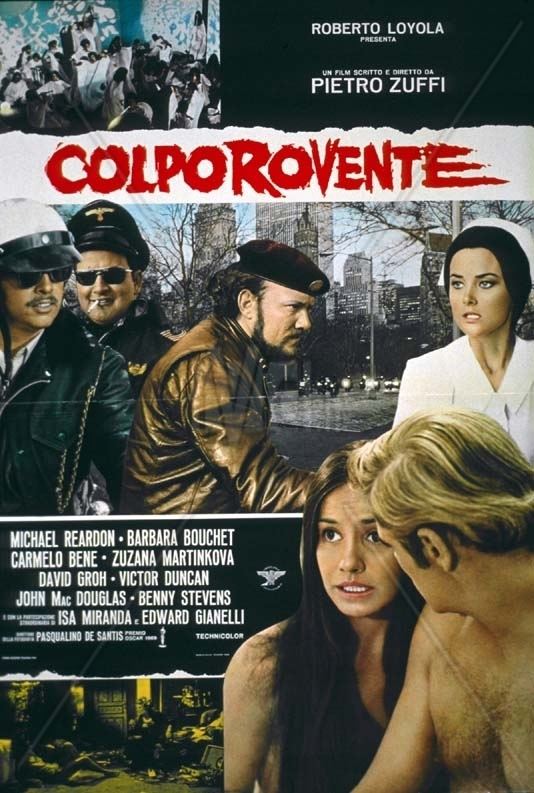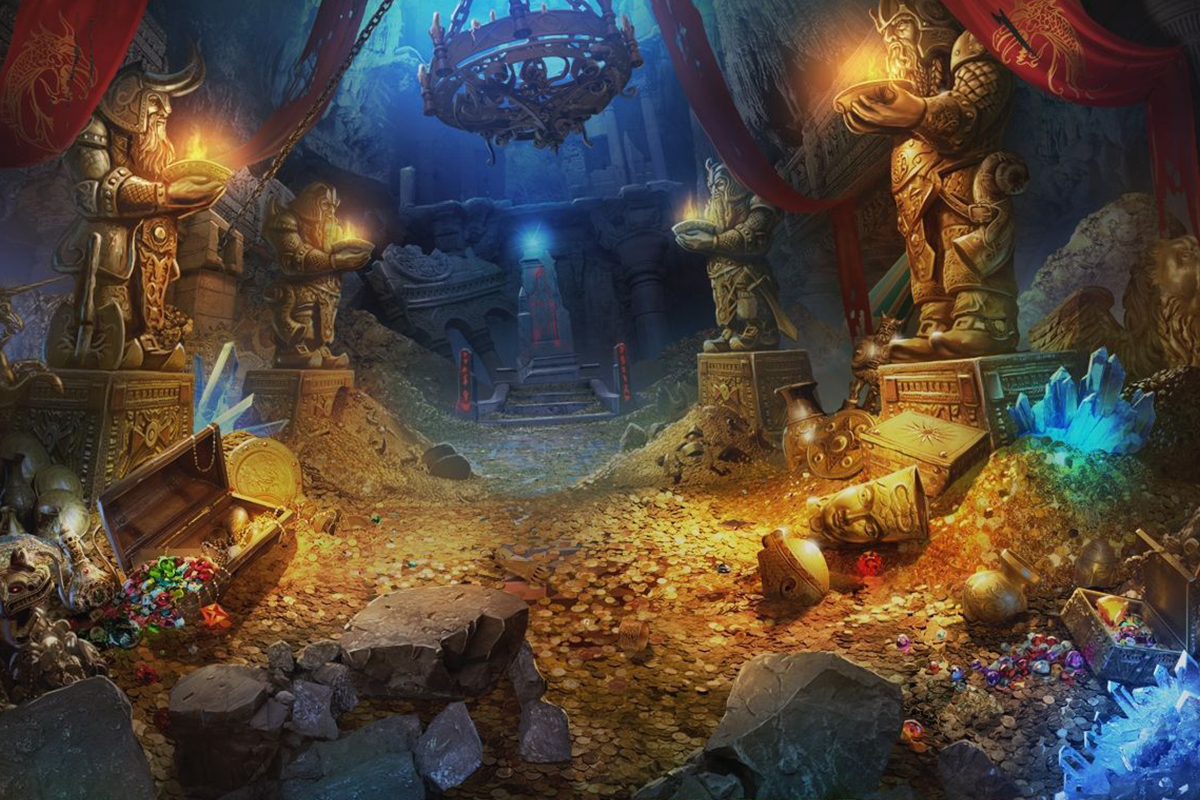
| - | - | - | - | - |
| Dungeons & Dragons | - | Dragon magazine | - | The Dragon #19 |
Hack, smash, chop-chop. bzzzap. in nomine patris, et filii, et spiri . . .
“Good, they‘re all dead. Bert, check the bodies, Fred, help me with
this chest.
Watch our for that trap. I got it. O.K. 11 ogres.
Where’s my M & T? Here we go
— that's a 1000 gold pieces plus a Type
C treasure. 10% chance of 2 magical items.
So
what's in the box? Humbug, just 1000 gold pieces and another lousy
potion.
Pack it
up boys!”
This scene happens all too often. Lazy referees just roll up most of
their treasures by the book and miss out on a lot of the fun that devising
special treasures can provide. The Dragon has already offered hints
on
determining the contents of tombs (Jim
Ward, TD #9) and here are some
additional suggestions for creative treasure planning.
1st of all, choose a theme. That single, low-level orc
carrying lots of
mithril and gems that you knocked off
could be a runner for the orkish
equivalent of the Syndicate.

The treasure itself is simple enough, but you
could suddenly find an assassin on
your tails and not know why. That
unguarded gold hoard you discovered might have belonged to a
leprechaun, who proceeds to steal
back not only his own loot, but also
half of yours behind your backs. No one has discovered it as yet, but
the
third level of one of my dungeons holds a bar with an alchemist
for a
bartender. The treasure consists of the varied contents of the bottles
behind the bar. The alchemist himself isn’t a very powerful person,
but
true to form, the half-a-dozen bouncers he keeps around are 12 feet
tall in
their hobnail boots — just so the customers don’t get too rowdy.
2nd, let there be some sort of connection between the various
items in a given treasure, as well as a connection between the treasure’s
contents and its guardian(s). For instance, have a cleric
or a healer with a
“1st aid kit,” a dragon horde with
lots of swords and armor from
unlucky adventurers, or a high-level thief’s
toolkit for opening locks and
chests, or perhaps a “disguise kit” belonging to an assassin (disturb
at
your own risk . . . ).
Let’s examine the possible contents of a “1st aid kit.” Healing
potion, certainly. Probably some
ammonia smelling salts useful for
waking up persons hit by a sleep spell.
The odds are good that there would
be a bottle of something poisonous — valuable to sterilize wounds but
deadly when swallowed. Oil
of Slipperyness, when taken internally,
relieves constipation, but it also gives you an automatic attack of
Montezuma’s Revenge with a concurrent temporary loss of CHA.
Bandages might be treated with a healing potion, and sometimes the
kit
should contain first-aid oriented scrolls such as Cure
Disease, Remove
Curse, Strength,
Neutralize
Poison, or even a
Resurrection.
A thief’s toolkit could contain a +1
dagger,
a gem that glows in the
PRESENCE of traps, a set of Gauntlets
of Dexterity, a skeleton key that
would raise its user’s chances of opening locks,
or a pair of “waldos”, that
would allow him to open trapped chests from a distance.
Don’t forget a
periscope for peeking around corners, or perhaps a bag
of holding for the
loot. Disappearance Dust
would be useful, as would a Gauntlet
of
Etherealness
that would let pouches and pockets be picked tracelessly.
An assassin’s “disguise kit” could
contain a few polymorph potions,
a plus +2 dagger, assorted poisons, wigs, makup, a Girdle of Femininity/
Masculinity, a Scareb of Death, and other assorted goodies.
One of my favorite treasure-making plans is to roll up a moderate to
high level character, give him or her a few personal quirks, and go
from
there. One high-level magic-user was so PARANOID that his best magical
item was a necklace of gems of detection
— Detect Magic, Detect Evil, Detect Good,
Detect Weres, Detect Gold, Detect Secret Doors, Detect Invisible, you
name it.
A bishop with a fondness for little boys had dozens of bottles of “Youth Potion”.
The possibilities are endless.
Enjoy creating creative treasures!
